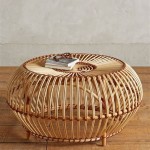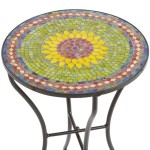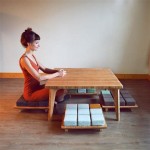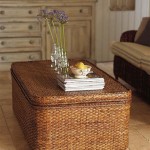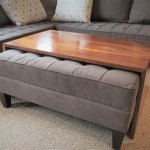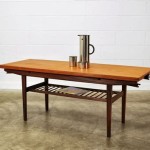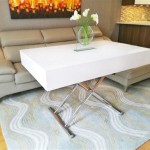Types of Table Setup in a Restaurant
Restaurant table setup is a crucial element of the dining experience, impacting everything from customer comfort and flow to operational efficiency and profitability. Different dining styles and occasions call for specific table arrangements, and understanding these variations is essential for restaurant owners and managers. A well-planned table layout optimizes space utilization, facilitates smooth service, and enhances the overall ambiance of the establishment.
1. Fine Dining Setup
Fine dining establishments prioritize an elegant and luxurious atmosphere. Table settings are typically formal, featuring crisp linens, high-quality silverware, and delicate glassware. Tables are often spaced generously to provide guests with a sense of privacy and exclusivity. This setup frequently includes charger plates, multiple forks and knives arranged according to the courses being served, and specific glassware for different beverages.
The specific arrangement might vary depending on the restaurant’s style and the menu being offered. However, the emphasis remains on creating a sophisticated and refined dining experience. Considerations such as the placement of bread plates, butter knives, and water glasses are carefully orchestrated to enhance the overall aesthetic and functionality of the table setting.
Fine dining setups require meticulous attention to detail. Staff members are trained to maintain impeccable standards, ensuring that each table is perfectly arranged and ready to receive guests. This meticulous approach contributes significantly to the overall premium dining experience.
2. Casual Dining Setup
Casual dining restaurants offer a more relaxed and informal environment. Table settings are simpler compared to fine dining, often using placemats instead of tablecloths and featuring a more basic arrangement of silverware. The focus is on practicality and efficiency while maintaining a welcoming atmosphere.
Table spacing in casual dining can vary depending on the restaurant's concept. Some establishments may opt for booth seating to maximize space and provide a sense of privacy, while others may utilize smaller tables arranged closer together to accommodate a higher volume of guests. Flexibility is key in this setting, accommodating larger groups or quickly resetting tables for new customers.
The casual dining setup prioritizes a comfortable and accessible experience, allowing guests to relax and enjoy their meal without the formality of a fine dining environment. While maintaining professionalism, the atmosphere encourages a more casual interaction between guests and staff.
3. Bistro/Cafe Setup
Bistros and cafes frequently utilize smaller, more intimate tables, often arranged closely together to create a bustling and social atmosphere. Table settings are typically minimal, with a focus on functionality rather than elaborate displays. This setup is well-suited for quick service and smaller groups, often featuring simple place settings and readily available condiments.
Many bistros and cafes utilize a combination of table sizes and configurations to accommodate various guest needs, from solo diners to small groups. Outdoor seating is also a common feature, offering guests the opportunity to enjoy their meal in the open air. This adaptability contributes to the vibrant and versatile nature of these establishments.
The emphasis in bistro and cafe settings is on creating a welcoming and communal space where patrons can enjoy a casual meal or beverage. The layout often encourages interaction between guests and contributes to the lively ambiance.
4. Banquet/Event Setup
Banquet and event setups are designed to accommodate larger groups of people for special occasions. Table arrangements can vary significantly depending on the event type, from long rectangular tables for formal dinners to round tables for more intimate gatherings. Linens, centerpieces, and other decorative elements are often used to enhance the aesthetic and reflect the event's theme.
Flexibility is paramount in banquet setups. The arrangement needs to accommodate factors such as presentations, dancing, or other activities planned for the event. Considerations such as stage placement, audio-visual equipment, and dance floor space influence the overall layout and table configuration.
Careful planning and execution are essential for a successful banquet or event setup. The arrangement should facilitate smooth service, ensure guest comfort, and create a visually appealing space that complements the occasion’s purpose.
5. Fast Food/Quick Service Setup
Fast food and quick service restaurants prioritize speed and efficiency. Table settings are minimal or non-existent, often featuring disposable packaging and self-service areas. Table arrangements are typically designed for quick turnover, with smaller tables and chairs that can be easily cleaned and rearranged.
The layout in fast food establishments is often designed to encourage flow and minimize congestion. Clear signage, designated ordering areas, and readily accessible condiments contribute to a streamlined customer experience. The priority is on providing quick service and maximizing the number of guests served during peak hours.
The simplicity and functionality of the fast food setup reflect the emphasis on speed and convenience. While comfort is still a consideration, the primary focus is on providing a quick and efficient dining experience for customers on the go.
6. Bar Setup
Bar setups are designed to facilitate social interaction and the consumption of beverages. High-top tables and bar stools are common features, encouraging guests to mingle and converse. Table arrangements may be flexible, allowing for easy reconfiguration to accommodate different group sizes. The bar area itself is a central element, providing a focal point for service and interaction.
Lighting and music play a crucial role in creating the desired atmosphere in a bar setting. Dim lighting and upbeat music can create a lively and energetic environment, while softer lighting and more subdued music can foster a more relaxed and intimate atmosphere.
Bar setups are highly adaptable, catering to a range of social interactions and preferences. From lively gatherings to casual conversations, the bar environment provides a flexible space for patrons to enjoy drinks and socialize.

Table Setting Diagrams Formal Fine Casual More Set Ups

Table Setting Diagrams Formal Fine Casual More Set Ups

Proper Table Setting 101 Everything You Need To Know Emily Post

The Three Types Of Table Settings Everyone Should Know Jes

Table Setting Diagrams Formal Fine Casual More Set Ups

5 Types Of Restaurant Table Setting Every Owner Must Know

5 Types Of Restaurant Table Setting Every Owner Must Know

Proper Table Setting 101 Everything You Need To Know Emily Post

Learn The Rules Of Table Setting And Pick Kind You Want Settings Etiquette Dining

5 Table Settings Every Host Should Know What S For Dinner
Related Posts

